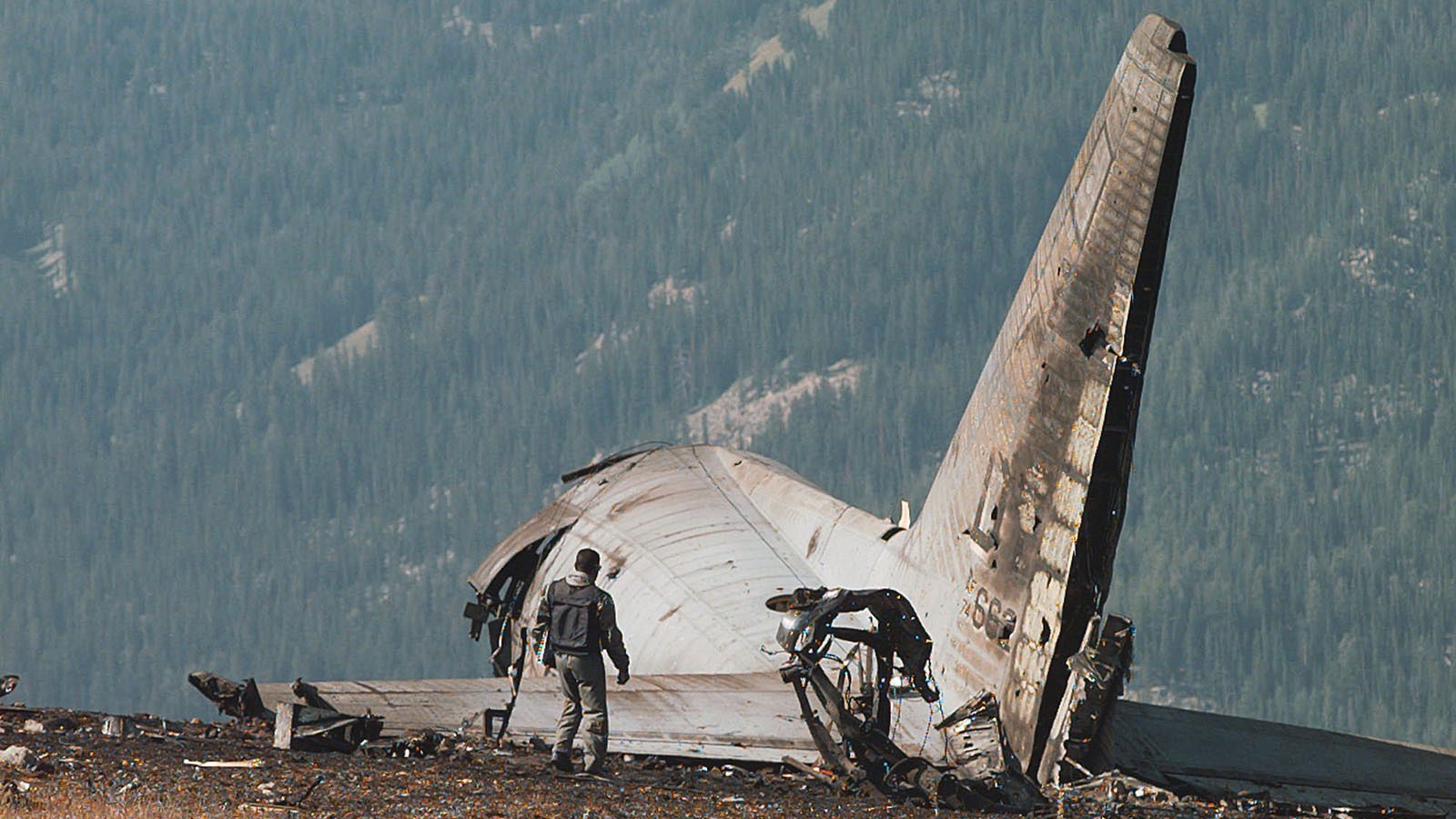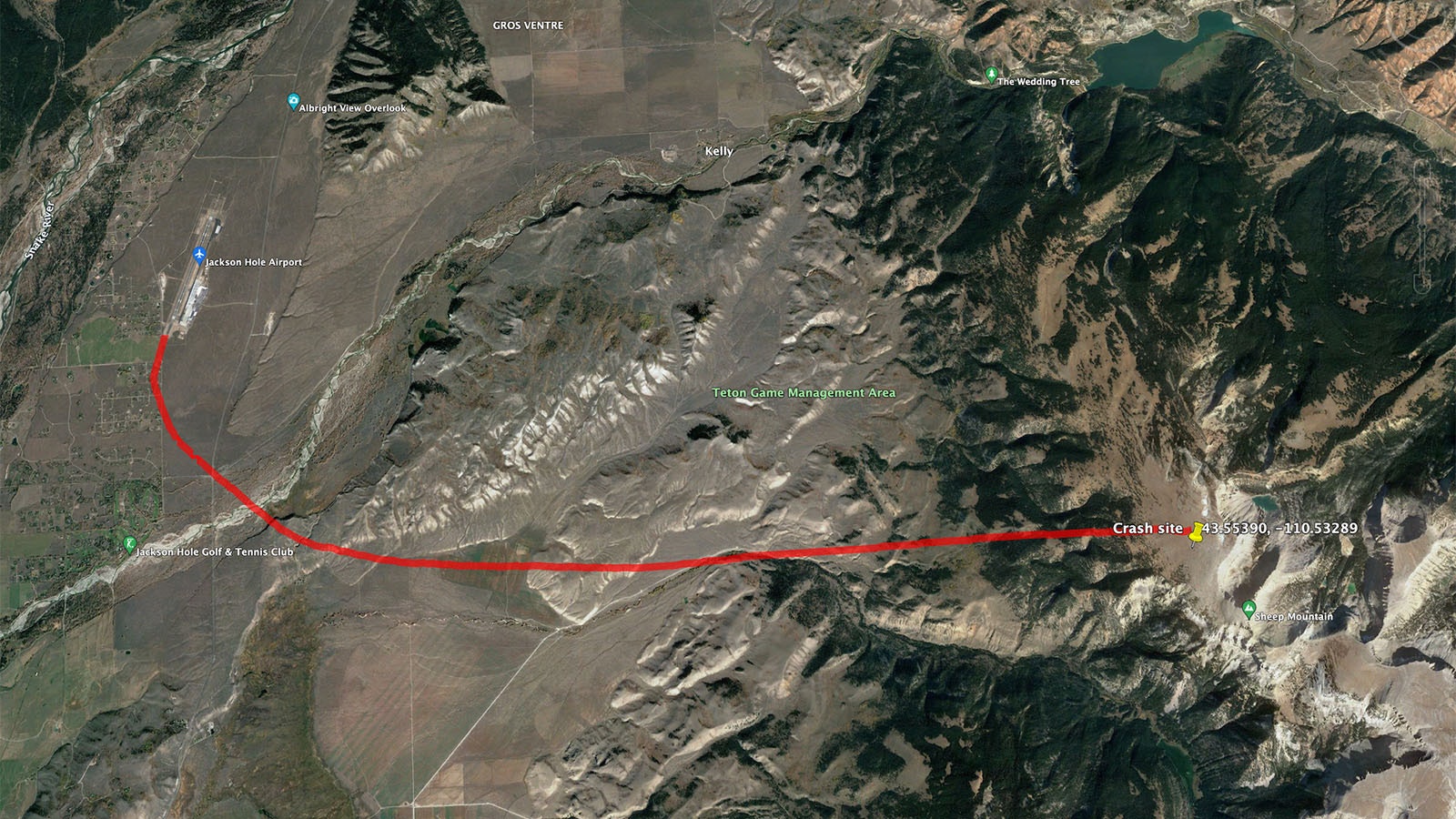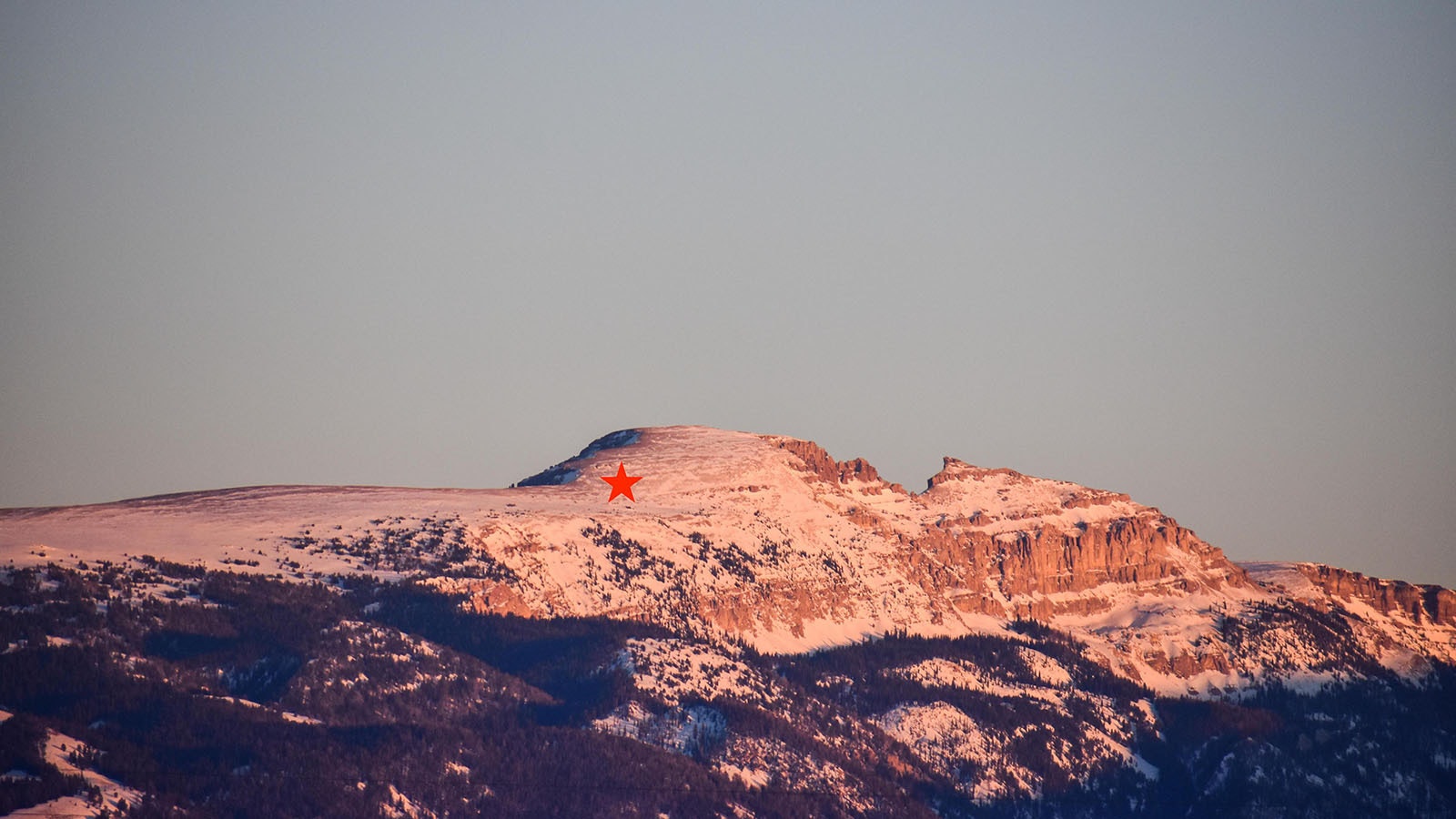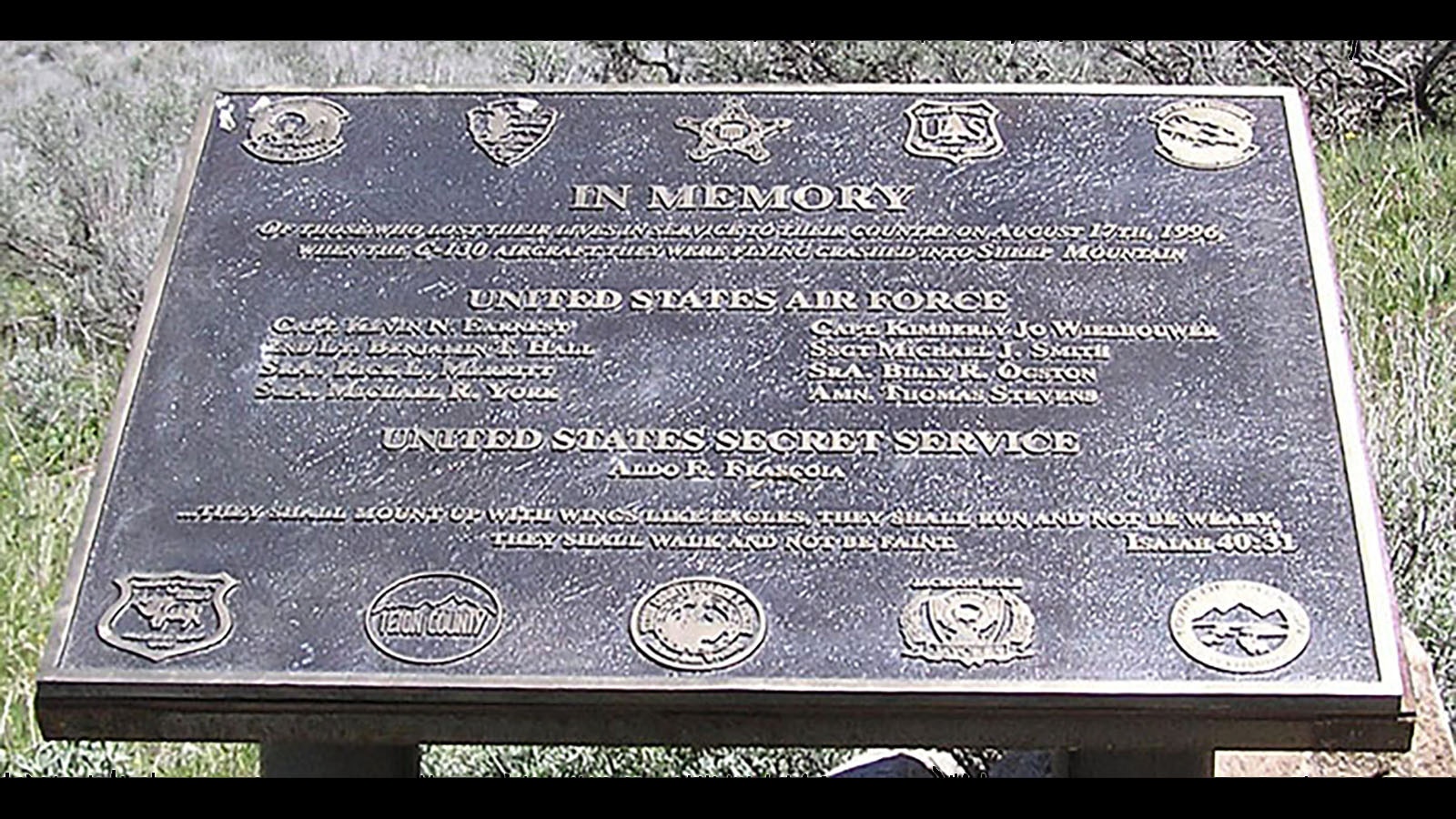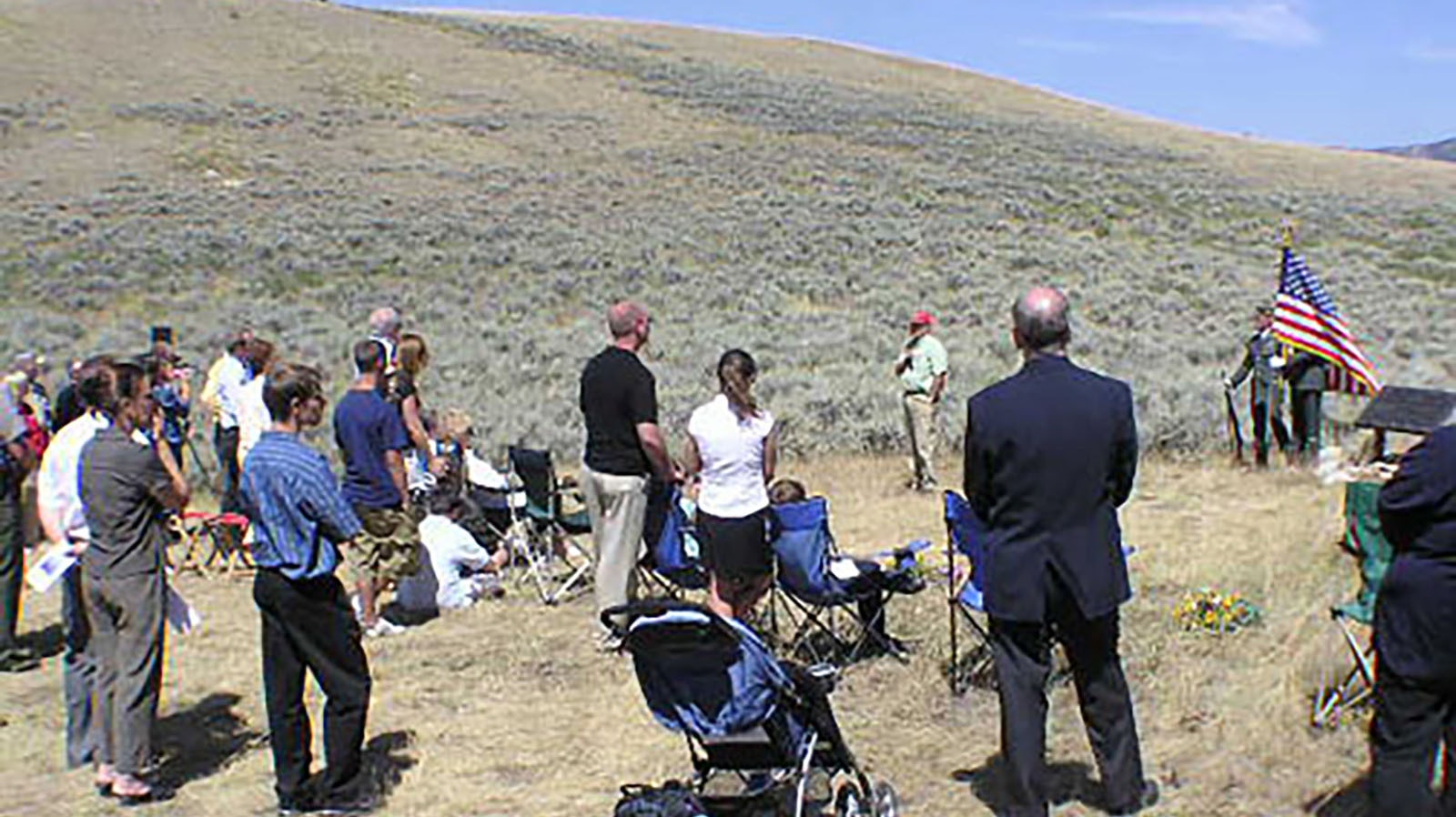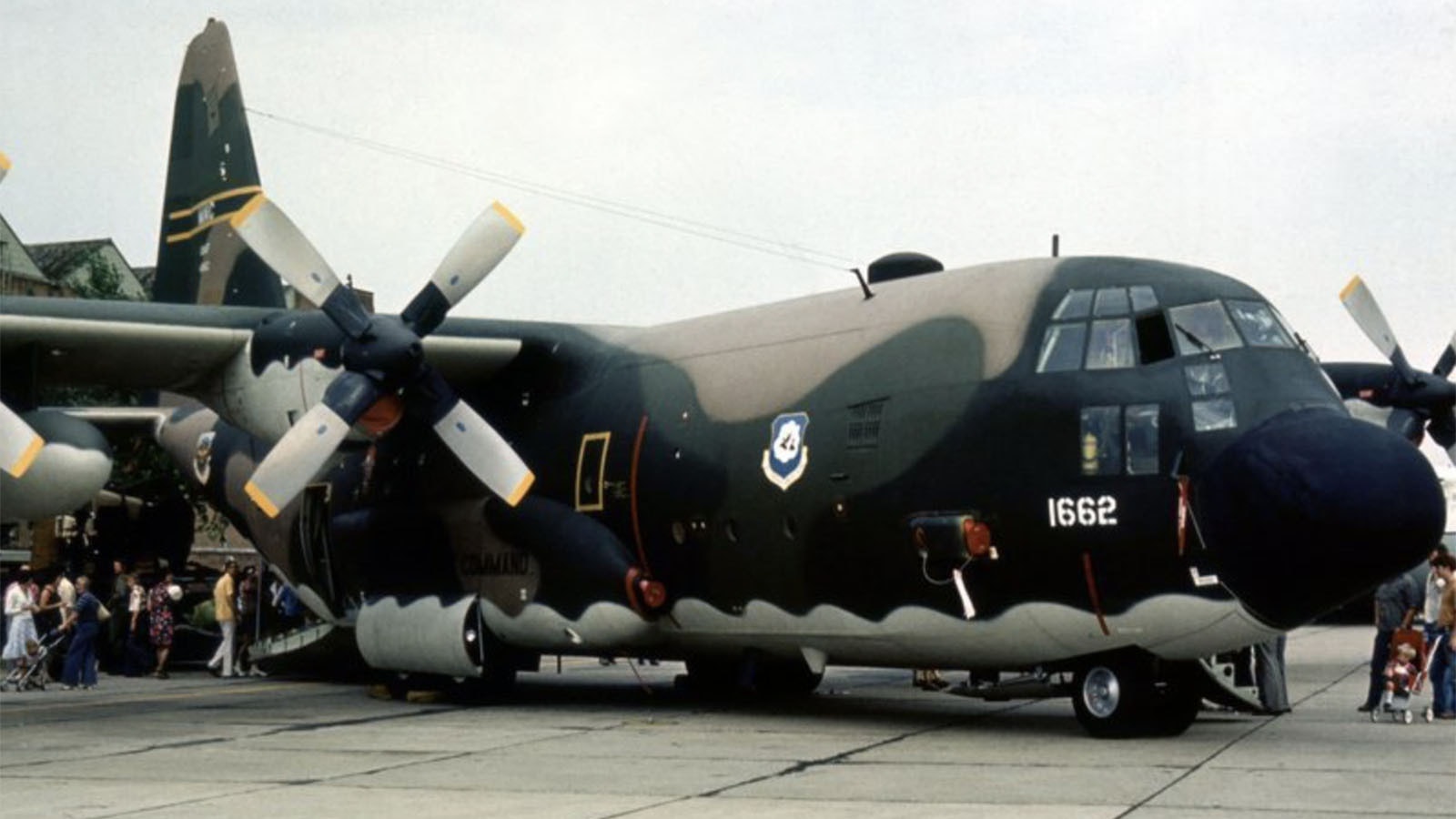The crash of an Air Force C-130 Hercules in Jackson Hole in the mid-1990s is still vivid in the memories of those living in the area when it happened.
The impact created a fireball that could be seen for miles. Even today, members of the rescue team recall the effort it took to reach the site, and the horrific scene they encountered and say they will never forget.
For the military as well the crash was not only never forgotten, but went a long way toward sweeping changes in procedure and implementing new guidelines concerning pilot training.
Cowboy State Daily has sifted through “black box” recordings of the pilots’ communications — a complete transcript of the three minutes before the aircraft slammed into a mountainside. The last thing picked up seconds before impact was the pilot’s voice saying, “My radar altimeter just died.”
Doomed Clinton Support Plane
In 1995, President Bill Clinton and family spent 10 days in the Jackson area, enjoying some vacation time. The following summer, the first family returned for another extended visit.
On Aug. 17, 1996, the Clintons departed Jackson Hole Airport for Bill’s 50th birthday party celebration in New York. His support team was to follow.
Nine souls — a crew of 8, along with a secret service agent — all died when their cargo plane crashed shortly after takeoff later that evening. It was one of the deadliest plane crashes in Wyoming history.
Those killed were pilots Capts. Kevin N. Earnest and Kimberly Jo Wielhouwer; 2nd Lt. Benjamin T. Hall; Staff Sgt. Michael J. Smith Jr.; Senior Airmen Michael R. York, Ricky L. Merritt and Billy R. Ogston; Airman Thomas A. Stevens; and Secret Service Agent Aldo E. Frascoia of Clinton, Maryland.
All eight Air Force personnel were based at Dyess Air Force Base in Abilene, Texas.

What Happened?
A Lockheed C-130 Hercules (registration 74-1662) flying with an Air Force crew of eight and one passenger took off from Jackson, wheels up at 10:47 p.m. on a moonless, “inkwell black” night, according to an airport operator. Three minutes later, the aircraft struck the west-facing slope of Sheep Mountain (known locally as Sleeping Indian for its distinctive profile) at 200 mph and exploded on impact.
There were no survivors.
In the days following the crash, even as it was being investigated, a Clinton spokesperson claimed mechanical trouble was reported by the pilot and the plane was turning around. This turned out to be completely erroneous, although there was some reported trouble starting the No. 3 engine initially on the tarmac.
A complete accident report blamed the crash on a relatively inexperienced crew failing to adequately plan for a night departure from an unfamiliar airport.
The crew ignored standard takeoff procedure to the south from Jackson Hole Airport’s one and only Runway 1/19 (then referred to as Runway 18). Protocol states all aircraft are to achieve an elevation of 11,000 feet prior to turning in any direction. Minimum safe altitude required in the immediate south and east quadrants is 12,800 feet.
Well before achieving a safe elevation, the pilot of the doomed C-130 banked hard left setting a direct course for JFK Airport in New York City. The plane was expected to touch down there in another five and a half hours.
A charter pilot living in the area observed the takeoff and said the plane began banking about 1 mile from the airport. He later told investigators the plane was flying “very low.”
“When I first saw the aircraft from my yard, they were about 100 feet above the tops of some trees,” the eyewitness pilot said. “At that point, they were definitely in a left-hand turn. Then they went wing level.
“I told my girlfriend that I wondered what they were doing. Some people do some pretty strange procedures out of here, and most of them make it out. I mentioned to her that they were awful low and off course.”
Another eyewitness on the ground, Anne Skov, watched as the C-130 rumbled by her window. “Oh my God, I saw the plane. It was way too low,” she told reporters.
The resulting fireball could be seen as far as Teton Village about 20 miles away. One cab driver in town commented that he thought there “was a fire brewing on Sleeping Indian.”
Difficult Rescue Mission
Search and rescue’s Keith Benefiel was the first on scene. He had spent the better part of that Saturday with the Clintons as they floated the Snake River. The crash site on the western slope of Sheep Mountain is accessible only by foot or horseback.
For one, the area is part of the Gros Ventre Wilderness where no mechanized travel is allowed. That mandate can be lifted for emergency rescues, but the rugged terrain does not allow for the use of four-wheelers and the like. Helicopters in the region are also grounded at night.
Even access roads to begin the strenuous four-hour one-way hike are remote and poorly maintained. The hike to the summit of Sleeping Indian is considered a strenuous trek covering 6.5 miles with 4,300 feet of elevation gain.
A total of 28 rescuers started up the mountain almost an hour past midnight. They split into two groups with sheriff’s deputies obtaining horses from a nearby ranch. Benefiel and his fit crew hit the trail on foot using headlamps to light the way.
When Benefiel arrived at the site around 4:30 a.m. he called it surreal. He noted several tires still burning, a tail section, and not much else intact. The smell of burning jet fuel and rubber was unforgettable, Benefiel would later say.
“There was no sign of survivors amid the still-smoldering wreckage,” said Roberta D'Amico, a spokeswoman for the National Park Service at that time.
Alan Merrell, a Teton County sheriff's deputy, added at an afternoon press conference the following day, “We just haven't found any [survivors] yet.”
The recovery mission was handed over to USAF the following day (Sunday). The Air Force recovered the flight recorder containing voice (CVR) and data (FLR) recordings. The military also removed most of the larger pieces, including the tail section, from the mountain.
Crew Was Somewhat Green
According to a report of the U.S. Air Force Accident Investigation Board published in 2000, Havoc 58 (call letters of the C-130 and crew) had just landed in Jackson after a 3-hour, 25-minute flight from Dyess.
The aircraft took on 14,359 pounds of fuel. A 10,000-pound communications vehicle used by the Secret Service in presidential motorcades was also loaded. Agent Frascoia boarded.
The master pilot was Capt. Kevin N. Earnest, a by-the-book flight instructor. His copilot was Capt. Kimberly Jo Wielhouwer. The navigator was 2nd Lt. Benjamin T. Hall.
All were well-trained, well-rested and highly regarded by their peers and superiors, according to the investigative report. Wielhouwer was called “relatively inexperienced,” as well as Hall, who was flying his first mission solo (without a navigator instructor).
While the crew prepped for the mission for several hours prior to leaving Dyess, most of the planning was reserved for a later mission at Pope AFB in North Carolina and the complexities of arrival at JFK. The only thing discussed about Jackson Hole was about it being a nonradar facility.
Jackson Hole Airport is a small public airport with no control tower and no radio contact with inbound or outbound planes. Air traffic control and communications is handled through Salt Lake City. Aircraft taking off from Jackson Hole are not picked up on regional radar until they achieve at least 13,000 feet altitude.
Charts on the Jackson Hole Airport are also designated with a white “T” set in a black triangle — a symbol noting special procedures are involved with takeoff and landing due to the short runway (6,298 feet) and high altitude (6,451 feet).
The crew never discussed surrounding terrain other than to note where mountains were in general.
Faulty Flight Plan
Designed as a workhorse, the Lockhead C-130 was well under its max capacity payload (175,000 total pounds). Still, even under light or normal load the four-engine turboprop military transport aircraft is not exactly nimble. The maximum rate of climb at sea level is 1,900 feet per minute. In Wyoming’s higher elevation, the rate of climb would be slower than that.
CVR recordings indicate the crew was concerned about runway length and aircraft performance. After discussing with the navigator, Earnest said he would prepare for an “assault” takeoff — an aggressive procedure making use of max horsepower and climb rate.
Earnest asked navigator Hall what the terrain looked like immediately south of the runway once they were airborne.
“It’s pretty much a mountain and valley terrain rising to 7,300 feet, about a 1,000-foot rise, 10 miles south of the field,” Hall responded, misreading the chart and making no mention of what the terrain looked like east of the airport.
“We would like a pretty sharp left turn and a pretty rapid climb rate,” Hall added.
“OK,” Earnest said. “Climb rate we’ll have to work on; the left turn I think we can do.”
Airport operators later told investigators the crew was aware of a published noise-abatement procedure to make a temporary 45-degree jag to the left as soon as possible after takeoff to reduce noise impact to residential areas southwest of the airport.
However, “you cannot maintain your heading after the left turn for very long because of the terrain,” the operator stated.
While taxiing, navigator Hall briefed the pilot to make a harder left to achieve an 80-degree heading (90 degrees would be due east), and maintain that heading in order to be picked up by the nearest guidance system at Boysen Reservoir tactical air navigation (TACAN) station.
“Left to zero eight zero? That’s going to be my terrain-clearance heading, too?” Earnest double-checked.
“Yeah, that’s affirmative,” the young navigator said. “The sooner we can turn, the better.”
It appears that the crew was not aware of the climbout terrain and the obstacles on departure, the report subsequently read.
Airborne: The Final 180 Seconds
After a full power takeoff, the Havoc 58 was wheels up at 10:47:19 p.m. Less than a minute and a half later, Earnest radioed to SLC that he was passing 8,000 feet and headed for a cruising altitude of 19,000. The aircraft was still too low to be detected by radar. SLC tower simply confirmed the communication.
At 10:49:25 p.m., Earnest asked copilot Wielhouwer if she was ready to take the controls, a transfer the two had prearranged to give Wielhouwer some flight time.
“Hold on,” the copilot answered.
“OK, no rush. Whenever you’re ready,” Earnest said as he finished the turn and leveled out bearing 78 degrees heading.
At 10:50:09, Wielhouwer said she was ready to fly. Earnest said, “OK, you have the aircraft.”
Seconds later, at 10:50:25, Earnest said, “My radar altimeter just died.”
It was the last thing the CVR recorded. The crew likely never saw the mountain before they hit it. The aircraft struck on the western slope just below the ridge of Sheep Mountain in an open area at 10,392 feet, about 9.2 miles from the airport.
According to the findings, the aircraft and cargo were destroyed on ground impact, with wreckage strewn along for about 1,480 feet in a path 370 feet wide. An intense fire began upon impact.
Flight data recorder information showed no malfunction with any of the plane’s engines or equipment. The crash was attributed to crew error and a lack of teamwork.
“Noncompliance with departure procedures sets course for impact with mountain,” reads the title of Accident and Prevention’s August 2000 evaluation.
Gant Ginter, a commercial pilot based in Jackson Hole, explained to reporters in 1996, “The cargo plane just didn’t get that high. You can't pick things up on radar in those mountains.”
Jeff Brown, president of Jackson Hole Aviation at the time, the airport's fixed base operator, confirmed that radar just doesn’t work in the mountains below about 13,000 feet.
“This territory around here is treacherous. You've got to follow the instrument procedures by the letter or you'll get in trouble,” Brown added.
Change And Closure
The crash in Jackson Hole was one of numerous incidents that plagued the military in the 1990s. It was the third in 16 months where an Air Force plane carried United States government officials to their death.
Most of the mishaps were attributed to crew error. As a direct result of the Sheep Mountain crash in Wyoming, Air Force regs would be revised to give more preference to particular nuances at local airports over the USAF codebook.
For almost two decades after the incident, hikers would stumble upon debris at the crash site. Tiny bits of glass, wire and plastic were sprinkled about. Hikers erected a wooden cross at the site and sometimes piled detritus into various mounds.
The Forest Service had plans to officially collect what trash they could, but that did not happen until 2015.
“The reality is there’s so much stuff, little bits of stuff, there’s no way we can totally clean that up,” said then-forest manager Linda Merigliano. But a volunteer team did manage to remove more than 120 pounds of debris.
A 10-year commemoration of the tragic event was held in 2006, including the dedication of a plaque. Several family members attended the ceremony and many said it provided them with a sense of closure after seeing where their loved ones came to rest high on that mountain.
Jake Nichols can be reached at jake@cowboystatedaily.com.

